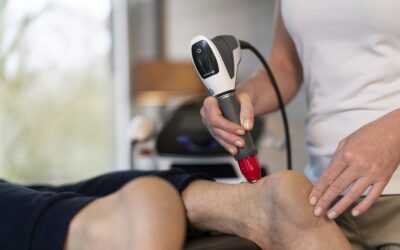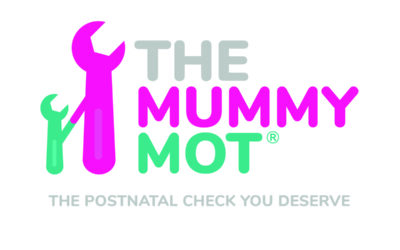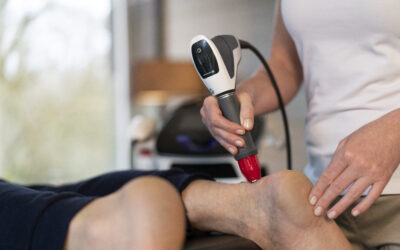This article was featured on HADO’s website when they consulted with Damien on advice for low back pain….
To get some expert advice into the subject, we questioned Damien Kelly, Director and Physiotherapist at Physica Health in Bagshot, Surrey about how 10 different everyday tasks can exasperate existing back pain, giving tips for those suffering about how they might be able to minimise their discomfort during these activities. Back pain can be a debilitating condition, affecting your daily life and overall well-being. If you’re in Bagshot and suffering from back pain, it’s crucial to understand effective back pain treatment options and find the right back pain physio near you for expert guidance and back pain physiotherapy. Let’s explore how to manage your back pain and improve your quality of life.
- Sleeping and Back Pain
A common issue for many is the impact of sleeping positions on back pain. Achieving a restful night’s sleep is crucial, especially if you’re dealing with back pain. The ideal sleeping position for individuals with back pain can vary based on its type and location. However, there are some general guidelines you can follow.
If you find that sleeping on your back is most comfortable, consider placing one or two pillows underneath your knees. This helps maintain the natural curve of your lower back and can reduce discomfort associated with back pain. The same applies to side sleepers. In this case, use two pillows beneath your top knee or sleep with your knees bent and a pillow in between. Such strategies help reduce rotation in the lower back while sleeping, providing relief to the lower spine and surrounding muscles.
It’s essential to listen to your body. If you wake up feeling sore or uncomfortable, it’s an indication that your sleeping position might not be suitable for your back pain.
- Toilet Habits and Back Pain
Believe it or not, even going to the toilet can exacerbate back pain. The position you adopt during bowel movements can be uncomfortable. The ideal position for opening your bowels involves sitting with your feet on a stool and leaning forward onto your knees with your elbows.
However, if you’re experiencing back pain, comfortably maintaining this position can be challenging. Some individuals may experience difficulty in opening their bowels due to an increase in analgesia. In such cases, it’s important to increase the amount of fiber and water in your diet, or consult a pharmacist for a suitable laxative.
Back pain can lead to tightness in aligned muscles, making it challenging to relax your pelvic floor and bottom muscles to pass a stool. In extreme cases, people may experience a loss of bowel and bladder control alongside their back pain. In such situations, seeking prompt medical assistance is vital.
- Bathing and Showering for Back Pain Relief
Hot water, in general, can have a soothing and relaxing effect on muscles that are in spasm. However, it’s advisable to wait 24-48 hours after the onset of back pain before using heat therapy, as it can exacerbate the inflammatory response if applied too early after injury. After this timeframe, both showers and baths can offer relief.
For those with local muscle spasm and pain, taking a sitting position in a bath can be beneficial. Immersing yourself in warm water allows your muscles time to warm up and relax, reducing the discomfort of back pain. However, individuals with disc-related back pain may find such positions painful. In this case, showering is a better option, allowing you to direct the flow of water over the painful area.
- Getting Dressed with Back Pain
Individuals suffering from back pain often find that activities requiring bending forward, which creates flexion in the lower spine, can aggravate their condition. Activities like putting on socks and shoes or straightening up after bending can be problematic.
If you’re experiencing such issues, it’s advisable to take your time while getting dressed and choose comfortable, easy-to-wear footwear and clothing.
- Driving with Back Pain
Driving can be painful for those dealing with back pain, primarily due to the prolonged periods in a fixed position. To minimize discomfort, especially on long journeys, consider taking regular breaks to get out of the car and move around.
Cars with bucket seats can be particularly challenging for back pain sufferers. You can try raising your chair out of the bucket position by using a seat pad. Many modern cars come equipped with built-in lumbar support, which you should utilize to support your lower back. Maintain your hips at 90 degrees to the back and ensure the back support is upright, promoting a supported sitting position.
- Sitting at a Desk with Back Pain
For individuals who spend long hours sitting at a desk, it’s crucial to find ways to alleviate back pain. If possible, alternate between standing and sitting during work by using a standing or height-adjustable desk or moving to a countertop periodically.
If you have to sit for extended periods, ensure you have a good chair with adequate lumbar support to keep you upright and close to your desk. Position your screen monitor at an appropriate height, allowing you to look straight ahead, and keep your keyboard and mouse close to your body to avoid reaching forward for prolonged periods. Some people find sitting on a Swiss ball for short intervals beneficial as it encourages movement and activation of the local spinal stabilizers in the back.
- Housework and Back Pain
For individuals with low-level back pain, performing light housework and cooking should be manageable. However, it’s essential to avoid sustained flexion or bending forward for extended periods as it can worsen your symptoms. Keep moving around and change positions frequently to reduce strain. If your back pain symptoms are aggravated by standing for extended periods, it might be more comfortable to perform tasks like chopping and food preparation while seated.
Heavy housework can be problematic for individuals with back pain, especially those involving repeated bending and heavy lifting. In such cases, it’s advisable to minimize heavier tasks as much as possible.
If heavy housework is unavoidable, break down the tasks to reduce the load. For instance, instead of carrying an entire load of wet washing out to dry, place a chair by the washing machine and individually transfer items to a basket on the work surface. Carry 2-3 pieces of clothing at a time out to the washing line, reducing bending and lifting.
For back pain sufferers with chronic discomfort, investing in a lighter hand-held vacuum can make vacuuming more manageable.
- Lounging on the Sofa with Back Pain
Even lounging on the sofa for extended periods can lead to stiffness and discomfort, especially if you have back pain. To prevent this, it’s essential to get up and move regularly. Take short breaks to perform gentle mobility exercises for your back or simply walk around. When sitting, avoid slouching and aim for a relatively upright but not rigid posture. Supporting your back’s natural curve with a cushion or pillow can help. If you have access to a futon, use it to support your feet. As with all advice about low back pain, discover the setup that works best for you, but remember to get up and move frequently.
- Exercising with Back Pain
Exercising with back pain can be challenging, but it’s possible with the right approach. Understand the exercises that work best for you and those to avoid. Typically, exercises involving loaded flexion should be approached with caution. This includes weightlifting exercises like squats and deadlifts, which place significant loads on the lower vertebrae.
While these exercises are fantastic for building strength in the general population, they are not recommended for those experiencing back pain due to the strain they put on the lower back. With guidance from a qualified health professional, it may be possible to reintroduce variations of these exercises over time. However, in the interim, consider alternative leg exercises like the leg press or seated variations, which allow you to gain strength without overburdening your lower back.
General cardiovascular exercise can also be beneficial, but the type of exercise should be chosen based on whether your back pain tends to occur more in a flexed or extended position. For those comfortable with flexion, cycling and static biking are suitable options, while walking, jogging, and using cross-trainer machines can be beneficial for those more comfortable in an extended position. Some individuals find relief by getting into the water or swimming pool.
Before and after exercise, include gentle low back mobility exercises and, most importantly, listen to your body. Assess whether you feel comfortable during and after your workout or if you wake up the next day with increased pain and stiffness. This will guide you in determining if your back is ready to continue with a particular type of exercise or if you need to adjust your routine.
- Intimacy and Back Pain
Studies have shown that people with back pain often engage in less sexual activity than those without. This can be attributed to various factors such as a loss of interest in sex, fear avoidance, low self-esteem, and the presence of pain. To enjoy a fulfilling sexual experience, it’s essential to adapt sexual positions according to the type of back pain you’re experiencing.
If your back pain is disc-related or worsens with forward bending, positions that require holding forward-leaning postures may not be suitable for you. In this case, opt for a supported position like the missionary position. Placing a pillow under your hips and knees can provide additional support.
If your back pain is aggravated by arching backward (often associated with facet joint problems, arthritis, or spinal stenosis), you may find the side-by-side spooning position more comfortable.
If you experience additional pain during intercourse, it’s advisable to stop, try a different position, or attempt intercourse at a later time. Pillows can be used to adapt positions and make them more comfortable. Focus on moving with your hips and knees rather than overusing your back. Use pain relief when necessary and consult a healthcare professional for guidance. Most importantly, maintain open communication with your partner regarding any concerns or worries related to back pain and intimacy.
For more information or to request any advice on the above – Contact Physica Health – London Road, Bagshot, Surrey, GU19 5HD. info@physicahealth.co.uk. www. physicahealth.co.uk
You can find out more about our Physiotherapy team here




0 Comments